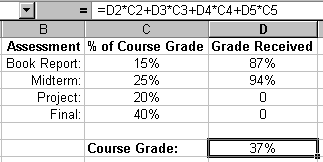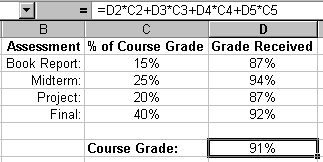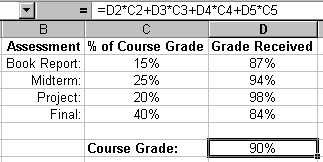
How do you make decisions? When you are given two or more equally appealing (or unappealing) options how do you decide which is the best choice? Some people (consciously or unconsciously) imagine the consequences of each option, and choose the option that maximizes some criteria that is important to them.
If, instead of using your imagination, you simulated the consequences of each action with a spreadsheet you would have a "what if" model.
A spreadsheet "what if" model is a spreadsheet used for decision making. It has the same elements as other spreadsheets (labels, numbers, and formulas) but is a "what if" model by virtue of how it is used. A "what if" model is a spreadsheet that calculates a result based on some variable input. You use a "what if" model by scratching your chin and gazing contemplatively off into the distance as you say to yourself, "Hum...what if I changed the input by x %? How would that impact the result?" After many different variations of input it becomes increasingly clear how various sets of input values affect the domain you are simulating. This new information is used as a basis for some decision in the domain.
Consider a specific example. Suppose you are taking a course and your course grade is based on four assessments:

You are more than halfway through the semester and have completed the Book Report and Midterm:

You want to know what score is required on the Project and Final to receive an A for the course. (Assume a course grade of 90% or better is required to receive an A for the course. Also, assume you can accurately predict your grade on the Project and Final based on your preparation efforts.)
The first step is to create a spreadsheet that will compute your course grade based on the grade you receive for the four assessments and their weights:

There are of course many possible Project and Final grade combinations that will result in an A for the course. Here are two:
  |
Once you have developed the spreadsheet you can begin to try "what if" scenarios. For example, you might wonder, "what if I received a perfect score of 100% on the Project. What score than would I need to get on the Final to still receive an A for the course?" The spreadsheet makes it easy to change numbers and try out different scenarios.
In this simple example there were only two input values (Project and Final grade) and one output value (Course Grade). For this example a spreadsheet was a convenient. When your problem domain contains many interrelated inputs and outputs, a spreadsheet is almost a necessity.
Consider a more complex example. Suppose you are shopping for a house when you are granted a salary increase of $100 a month. Should you put the money in a 401(k) account or should you use the money to purchase a larger home? What are the costs and benefits of each option? You can evaluate for yourself the personal satisfaction of owning a larger house, but how do you estimate the financial costs? A more expensive home might appreciate more, and allow for a larger interest deduction, but it will also have a higher tax and utility burden. Contributions to a 401(k) reduces your taxable income today and accumulates tax free until you make a withdrawal. To help you decide what the best choice is for your personal situation, you can set up a "what if" model that shows the costs and benefits of a certain asset allocation.
In summary, a "what if" model is a spreadsheet used in decision making. The spreadsheet simulates a complex process or transaction and is usually used to determine the set of inputs that maximize some criteria.